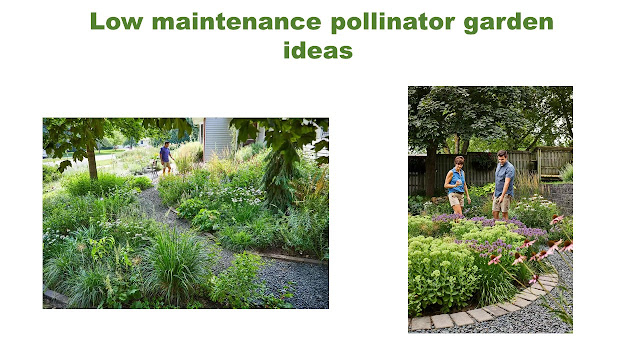Three pollinator garden ideas
Pollinators can find everything they need in this very low-maintenance landscape. When his parents bought a house in Carroll, Iowa, Austin Escheid saw what many aspiring garden designers dream of: a blank canvas. "The weekend they left I drove home with a car full of plants," says Eischeid, who at the time was working toward a bachelor's degree in horticulture at nearby Ames. He arrived at their new location with a clear view of meadow-like meadows and a landscape of blooming perennials. He got the idea after hearing horticulturist Roy Diblick lecture on the beauty of natural gardens and their ability to attract pollinators. Practically speaking, Eischeid saw the approach as a way to relieve his parents of frequent pruning, watering and mowing.
So out went the mowed lawn of the front yard, along with the shrubs and vines grown in the backyard. In their place, Eischeid arranged lawn-like plants in drifts, a move he learned while working with Dutch garden designer Piet Odolf. Eischeid practiced techniques from the school, such as packing plants tightly to prevent weeds.
In eleven years, the garden is overflowing with grass and flowers and has become a retreat for Escheid's parents. He now lives in Chicago, where he works as a garden designer, but his mother, Belinda, keeps him informed about how plants are replenished and which flowers bees visit. "She sends me 40 to 50 pictures a week, no joke," Eischeid says. "She calls gardening her hobby."
With the new design, the garden needs almost no care. "In 11 years, when there was a drought, it was only watered five times," Eischeid says. Her parents skip the usual fall cleanup and allow her to plant perennials as food for birds and winter interest. In early spring, they cut the perennial beds to the ground, but leave the debris where they fall to compost and isolate the soil to stimulate new plant growth.
How to Create Your Own Landscape Garden
You don't need to hire a professional landscaper to make your own garden pollinator-friendly. Eischeid has some simple tips that anyone can use to embrace a more natural style in their garden.
1. Perennial plants
Eischeid recommends choosing five to seven varieties and planting several in a mass for waves of color and texture. Repeat the mix in different beds such as alliums, coneflowers and penstemon next to the moor grass.
2. Let your plants grow naturally
Part of the beauty of a garden is watching it unfold through the seasons. Eischeid avoids deadheading and instead looks at the perennial life cycle: seed filling, flowering and seed set.
3. Design the breakpoints
If you're packing your garden with plants, it's important to create breathability in the form of containers, seating or fountains, says Eischeid. In his parents' backyard, he included three water features and five small seating areas.




Comments
Post a Comment